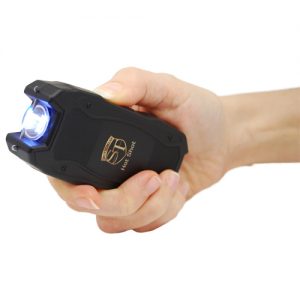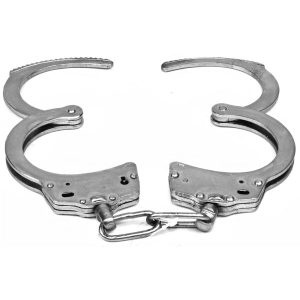Shipping stun guns to New York is quite complicated due to strict state regulations. While federal law doesn’t classify stun guns as firearms, New York imposes barriers, requiring compliance certifications, and background checks for shipping companies. Major carriers like UPS and FedEx generally don’t ship stun guns to New York, and local ordinances add further challenges. Violations can result in hefty fines or imprisonment. It is important to verify shipping methods’ legality and vendor reliability before purchasing. If you’re considering obtaining a stun gun, understanding these regulations thoroughly will equip you better for the next steps.
Key Takeaways
- Recent legal changes allow possessing stun guns in New York under specific conditions.
- Shipping stun guns to New York is restricted by state laws despite federal allowances.
- Major carriers like UPS, FedEx, and USPS prohibit shipping stun guns to New York.
- Online retailers must comply with stringent local ordinances when shipping stun guns.
Understanding Stun Guns
 Stun guns are non-lethal self-defense weapons that deliver an electric shock to immobilize an attacker. They work by disrupting the body’s neuromuscular system, causing temporary incapacitation. As a personal safety device, a stun gun can offer you peace of mind, especially in potentially dangerous situations. With increasing concerns about personal safety, many people turn to these self-defense tools as a reliable option to protect themselves without resorting to lethal force.
Stun guns are non-lethal self-defense weapons that deliver an electric shock to immobilize an attacker. They work by disrupting the body’s neuromuscular system, causing temporary incapacitation. As a personal safety device, a stun gun can offer you peace of mind, especially in potentially dangerous situations. With increasing concerns about personal safety, many people turn to these self-defense tools as a reliable option to protect themselves without resorting to lethal force.
When choosing a stun gun or stun baton, it’s crucial to understand how it functions. The device typically requires direct contact with the assailant to deliver the electric shock. This shock, measured in volts, affects the muscles, making it difficult for the attacker to move, thereby giving you a chance to escape. Unlike other self-defense tools like pepper spray or tasers, stun guns don’t shoot projectiles, which means you must be in close proximity to the threat.
Research shows that stun guns are effective in various scenarios, providing a non-lethal means to deter attackers. Studies indicate that the majority of stun gun incidents result in the attacker being immobilized, thereby greatly enhancing your personal safety. By understanding stun guns’ operational mechanics and benefits, you can make an informed decision about incorporating them into your self-defense strategy.
New York’s Weapon Laws
Maneuvering New York’s weapon laws can be challenging, especially when it comes to understanding the regulations surrounding self-defense tools like stun guns. Weapon classifications are strict in New York, and knowing what’s permissible can guarantee you stay on the right side of the law.
New York’s laws categorize weapons into various classes, each with specific regulations. Understanding these classifications is vital for selecting appropriate self-defense options. Stun guns, for example, are classified under electronic dart guns and other similar devices.
Here are a few key points to take into account:
- Legal Status: Stun guns were previously illegal in New York, but recent court rulings have changed their status.
- Permit Requirements: You don’t need a permit to own a stun gun, but you must comply with local regulations.
- Usage Restrictions: Even legal self-defense tools have usage limitations, particularly in sensitive areas like schools and government buildings.
Historical Regulations
 When looking at historical regulations, you’ll notice that early legal restrictions on stun guns in New York were quite stringent, reflecting broader concerns about public safety.
When looking at historical regulations, you’ll notice that early legal restrictions on stun guns in New York were quite stringent, reflecting broader concerns about public safety.
Over time, legislative amendments have gradually shaped the legal landscape, responding to changing societal needs and technological advancements.
Additionally, various court rulings have greatly impacted the enforceability and interpretation of these laws, paving the way for the current status of stun gun regulations.
Early Legal Restrictions
In the early days of stun gun regulation, New York enacted strict laws to control the possession and use of these devices. These laws were primarily driven by concerns over public safety and aimed to establish strong legal precedents. The state classified stun guns alongside firearms, making their possession illegal for most residents.
Several key factors influenced New York’s approach:
- Public Safety Concerns: Authorities believed that making stun guns widely available could increase the risk of misuse and accidents.
- Legal Precedents: Courts supported stringent regulations, aligning stun gun laws with existing firearm restrictions.
- Crime Prevention: Legislators argued that severe limits on stun guns would help reduce violent crime rates.
Under these early restrictions, stun guns were considered dangerous weapons, and their sale, purchase, or possession could result in severe penalties. The goal was to create a safer environment by limiting access to potentially harmful devices.
These early laws laid the groundwork for future regulations, reflecting a cautious stance towards electronic self-defense tools.
Legislative Amendments Timeline
Over the years, New York’s stun gun laws have undergone numerous amendments, reflecting shifts in societal attitudes and legal interpretations. Legislative history shows a significant evolution in how these devices are regulated. Initially, stun guns were outright banned under New York Penal Law 265.01. However, as public opinion and legal perspectives evolved, the state legislature revisited these restrictions multiple times.
Each amendment impacted the legal landscape for stun guns. For example, in the early 2000s, minor adjustments were made, allowing for limited exceptions under specific conditions. By 2019, the legislative body had enacted more substantial changes, prompted by growing advocacy for self-defense rights. These amendments allowed individuals with no criminal history to possess stun guns under certain guidelines legally.
Understanding the amendment’s impact helps you grasp how the law has balanced public safety with personal protection rights. The legislative history underscores a gradual shift towards leniency, yet always with an eye on maintaining public order.
Each legislative change paved the way for the next, reflecting a dynamic interplay between evolving societal norms and legal frameworks. This nuanced evolution highlights the complexity of regulating self-defense tools in a modern context.
Court Rulings Impact
 Court rulings have greatly shaped the regulatory landscape for stun guns in New York. Over time, various court interpretations and judicial precedents have influenced whether these devices can be purchased, possessed, or shipped to residents. Historically, New York had stringent laws prohibiting stun guns. However, a series of significant court rulings have gradually altered this stance.
Court rulings have greatly shaped the regulatory landscape for stun guns in New York. Over time, various court interpretations and judicial precedents have influenced whether these devices can be purchased, possessed, or shipped to residents. Historically, New York had stringent laws prohibiting stun guns. However, a series of significant court rulings have gradually altered this stance.
In 2019, a pivotal case, Maloney v. Singas, challenged the blanket ban on stun guns, arguing that it infringed on Second Amendment rights. The court ruled in favor of the plaintiff, leading to a significant shift in regulatory enforcement. Here are some key impacts of court rulings:
- Legal Precedents: Cases like Maloney v. Singas set important judicial precedents that have weakened New York’s strict regulations.
- Constitutional Interpretations: Courts have increasingly interpreted the Second Amendment to include the right to possess stun guns.
- Regulatory Adjustments: Following court decisions, New York has had to amend its laws, allowing for more leniency.
Understanding these court rulings is vital for comprehending the current and future landscape of stun gun regulations in New York.
Recent Legal Changes
You might be interested to know that recent legal changes have notably impacted stun gun regulations in New York.
Legislative updates and court rulings have reshaped the legal landscape, making it essential to understand how these changes affect shipping regulations.
Let’s break down the legislative background, the influence of court decisions, and the latest updates on shipping rules.
Legislative Background Overview
Recent legal changes have considerably impacted the regulations surrounding the shipment of stun guns to New York. The legislative intent behind these updates primarily focuses on enhancing public safety while balancing individual rights.
Initially, New York had strict restrictions on the possession and shipment of stun guns, categorizing them as illegal under most circumstances. However, recent shifts in legal interpretation have prompted significant amendments.
A few key factors drive these changes:
- Court decisions: Legal battles challenging the constitutionality of stun gun bans have influenced legislative adjustments.
- Public demand: Increased public interest in self-defense tools has pressured lawmakers to reconsider existing laws.
- Technological advancements: Modern stun guns are often more precise and less lethal, prompting a reevaluation of their safety.
Court Rulings Impact
Legal battles challenging the constitutionality of New York’s stun gun ban have led to significant changes in the state’s regulatory landscape. Recent court rulings have redefined how stun guns are perceived under the Second Amendment, affecting both legal interpretations and practical applications. Judges have scrutinized previous court precedents, leading to new judicial interpretations that now influence the legality of stun gun possession.
Several landmark cases have played pivotal roles in these developments. For instance, in Avitabile v. Beach, the federal court ruled that New York’s complete ban on stun guns was unconstitutional. This ruling set a new standard, prompting state legislators to reassess and modify existing regulations.
| Court Case | Year | Outcome |
|---|---|---|
| Avitabile v. Beach | 2019 | Ban declared unconstitutional |
| Caetano v. Massachusetts | 2016 | Stun guns protected under the Second Amendment |
| People v. Yanna | 2012 | Struck down stun gun prohibition |
These court cases illustrate the evolving judicial interpretations surrounding stun guns. As a result, New York has had to adapt its laws to align with these court precedents. It’s essential to stay updated on these changes, as they directly impact your ability to possess and potentially ship stun guns within the state.
Shipping Regulations Updates
Many recent legal changes have greatly altered how stun guns can be shipped to New York. Recent court rulings and legislative updates have refined the regulations, making it vital for you to stay informed. Knowing the specifics can help you navigate the complexities of shipping costs and delivery methods for stun guns.
For example, the legal changes have introduced new requirements for shipping companies, including background checks and compliance certifications. These measures guarantee that only authorized individuals can receive stun guns in New York.
Here are some key updates:
- Increased Shipping Costs: Due to heightened security measures, shipping costs have risen. This includes added fees for background checks and certification processes.
- Restricted Delivery Methods: Certain delivery methods, such as using regular mail, are now restricted. Only certified carriers can handle these shipments.
- Tracking Requirements: Enhanced tracking requirements mandate that every shipment must be traceable from the point of origin to the final destination.
These updates clearly show that understanding the new regulations is essential for compliant and efficient shipping of stun guns to New York.
Federal Vs. State Law
Maneuvering the intricacies of federal and state law can be particularly challenging when it comes to shipping stun guns to New York. Federal firearms laws, alongside state regulations, play significant roles in determining what’s permissible.
While the federal government doesn’t classify stun guns as firearms, meaning they’re not subject to the same stringent regulations as guns, state laws vary widely.
In New York, state regulations are especially strict. Just a few years ago, possessing or shipping a stun gun within the state was entirely prohibited. However, recent legal changes have shifted this landscape. New York now allows possession under certain conditions, but shipping remains a gray area due to overlapping jurisdictional rules.
When considering federal versus state law, you’ll notice that federal laws typically provide a broad framework, while state laws often impose additional restrictions. This layered approach can confuse those looking to ship stun guns into New York.
To guarantee compliance, it’s essential to stay well-informed about both federal statutes and specific state regulations. Understanding these legal nuances can help you navigate the complexities of shipping stun guns, avoid potential legal pitfalls, and ensure that you’re on the right side of the law.
Purchasing Stun Guns Online
 When you’re considering purchasing stun guns online, it’s vital to understand the specific legal requirements and restrictions that apply. Online retailers offer various purchasing options, making it convenient to find the exact model you need. However, it’s important to verify that the transaction complies with federal and state laws, especially when dealing with states like New York that have strict regulations.
When you’re considering purchasing stun guns online, it’s vital to understand the specific legal requirements and restrictions that apply. Online retailers offer various purchasing options, making it convenient to find the exact model you need. However, it’s important to verify that the transaction complies with federal and state laws, especially when dealing with states like New York that have strict regulations.
Online retailers typically provide detailed product descriptions and customer reviews, helping you make an informed decision. Before completing a purchase, confirm your:
- Verify the seller’s credibility and check for customer feedback.
- Review the specific legal stipulations for owning and carrying stun guns in your state.
- Confirm that the product meets safety standards and comes with a warranty.
Shipping Restrictions
Maneuvering the shipping restrictions for stun guns to New York requires a keen understanding of both federal and state regulations. While federal law permits the shipping of stun guns, New York state laws impose significant barriers. Online retailers face the challenge of managing these restrictions, often resulting in a refusal to ship to New York addresses. This is largely due to the complexity and variability of local ordinances within the state.
When considering shipping methods, it’s essential to recognize that carriers like UPS, FedEx, and USPS have their own policies regarding transporting stun guns. Many of these carriers refuse to ship weapons to states with restrictive laws, further complicating the process. Online retailers must comply with these carrier policies to avoid legal and logistical issues.
Additionally, some online retailers use third-party shipping services that specialize in handling complex regulations. These services can sometimes find legal loopholes, but they come with their own risks and costs. As a consumer, you must verify the legality and reliability of these methods to guarantee compliance with state laws.
Understanding these shipping restrictions can help you make informed decisions and avoid potential pitfalls.
Legal Consequences
 Failing to comply with New York’s stun gun regulations can result in severe legal penalties, including fines and imprisonment. If you’re caught possessing or shipping a stun gun illegally, you could face significant legal repercussions. The state views stun gun violations seriously, aiming to maintain strict control over such devices.
Failing to comply with New York’s stun gun regulations can result in severe legal penalties, including fines and imprisonment. If you’re caught possessing or shipping a stun gun illegally, you could face significant legal repercussions. The state views stun gun violations seriously, aiming to maintain strict control over such devices.
Legal consequences include:
- Fines: You could be fined substantial amounts for violating stun gun laws.
- Imprisonment: Depending on the nature of the offense, imprisonment is a possible outcome.
- Criminal Charges: Violations may lead to criminal charges, affecting your permanent record.
The legal framework in New York is stringent, and ignorance of the law isn’t a valid defense. It’s essential to research and understand these regulations fully to avoid unintended violations.
Being convicted of a stun gun-related offense can have long-term impacts, including difficulties in securing employment or housing due to a criminal record. The importance of adhering to these laws can’t be overstated; the state has clearly defined penalties to guarantee public safety and compliance.
Always stay informed and cautious when dealing with stun guns in New York to avoid these serious legal repercussions.
Alternatives to Stun Guns
If you’re seeking non-lethal self-defense options, consider alternatives to stun guns that are both effective and legal in New York.
One popular choice is pepper spray, which temporarily incapacitates an attacker by causing severe irritation to the eyes, skin, and respiratory system. Pepper spray is easy to carry and use, making it a reliable self-defense tool.
Another option is a personal alarm. These devices emit a loud, piercing sound when activated, drawing attention and potentially scaring off an assailant. Personal alarms are compact and can be attached to your keychain or bag, ensuring they’re always within reach for your personal safety.
Tactical pens also serve as effective self-defense tools. They function as regular writing instruments but are designed with reinforced bodies that can be used to strike an assailant in close-quarters situations. Their dual-purpose nature makes them discreet and practical.


